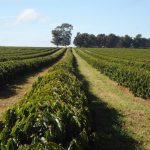Description
Ethiopia
Widely believed to be the origin of the Coffea arabica plant, Ethiopia remains a powerhouse in the coffee world to this day.
Ethiopia is the world’s seventh largest coffee producer, and the top producer on the African continent. Residents of the country account for half of its consumption, and the other half is exported to major markets like the EU, North America, and East Asia. Production methods remain mostly unchanged, with most cultivation and drying done by hand.
The government’s role in Ethiopia’s coffee production is unique, with an established Coffee and Tea Authority that acts as a part of the federal government. It sets regulations that fix prices washing stations must pay to buy beans from farmers, requires extended licensing in the domestic market, and maintains the previous regime’s decision to turn all washing stations into farmers cooperatives. It also regulates trademarks on regional names, including Harar, Sidamo, Yirgacheffe, and Limu.
Yirgacheffe
Ethiopia Yirgacheffe Aramo is sourced from small coffee producers organized around the Kebel Aramo coffee mill, located in the Gedeo Zone of the Yirgacheffe district. The Gedeo Zone is named after the Gedeo people who are indigenous to this area. Ripe cherries, indigenous varietals, are delivered to the Kebel Aramo mill. .Dried in the sun on drying beds“for approx. 12-15 days. In the daytime the cherries need to be raked continuously in order to ensure a consistent drying process. In the day time , it will be covered from 12 to 3pm in order to protect it from the hot sun, as well as, when the night comes, the beds are carefully covered to protect it from rain fall. The beans are transported in parchment to Addis Ababa, the capital of Ethiopia, to be milled and bagged prior to export.








Reviews
There are no reviews yet.